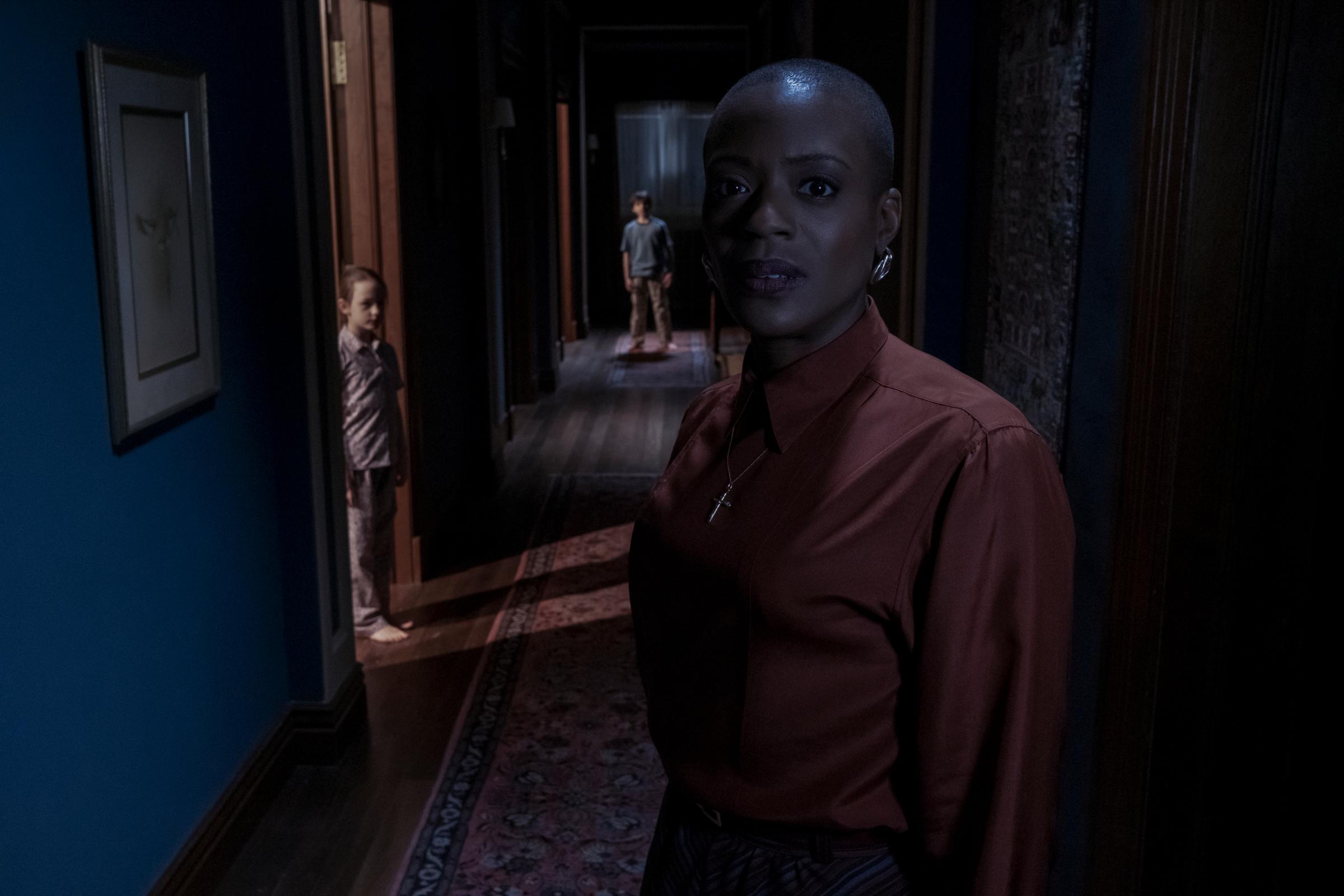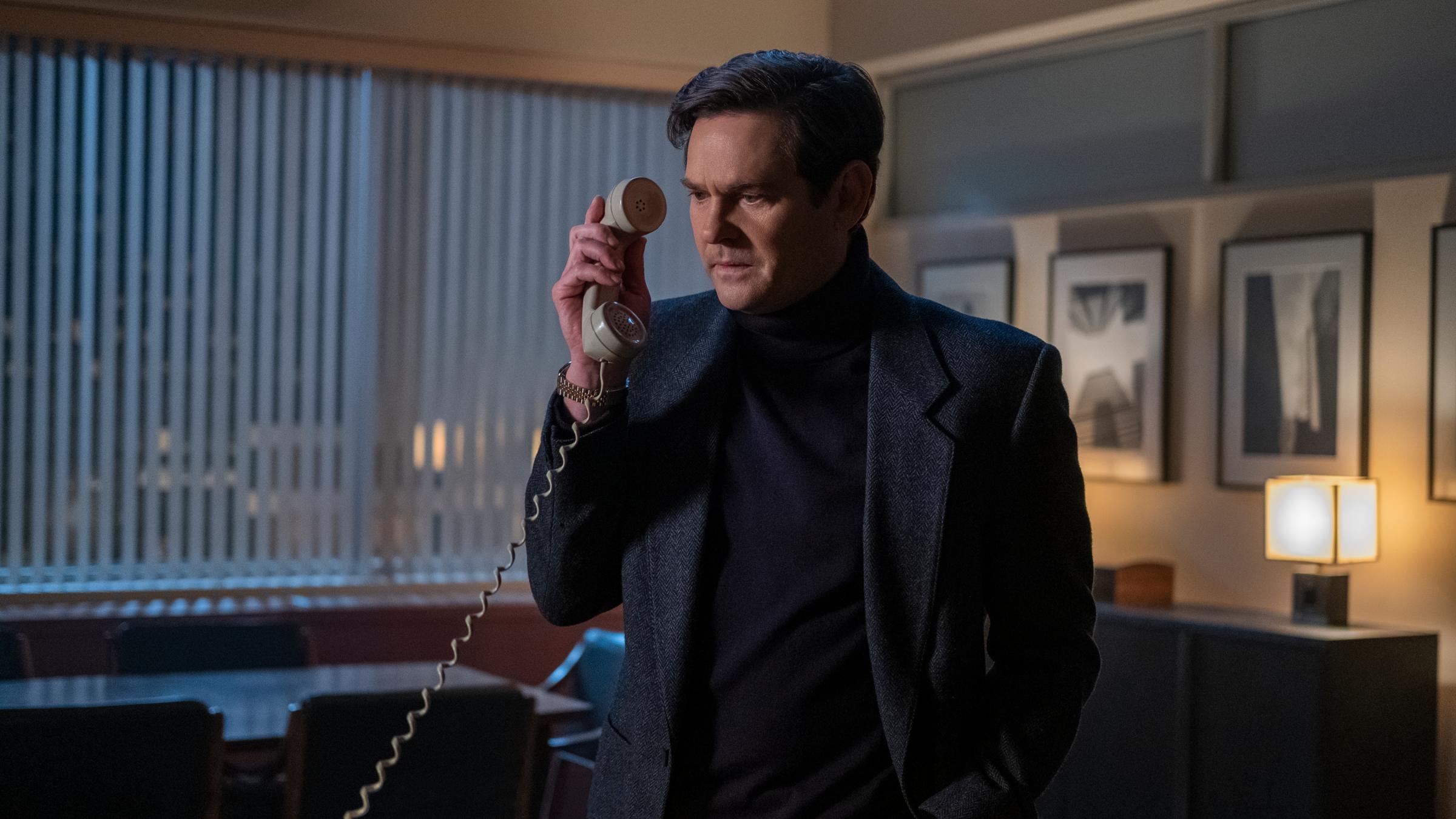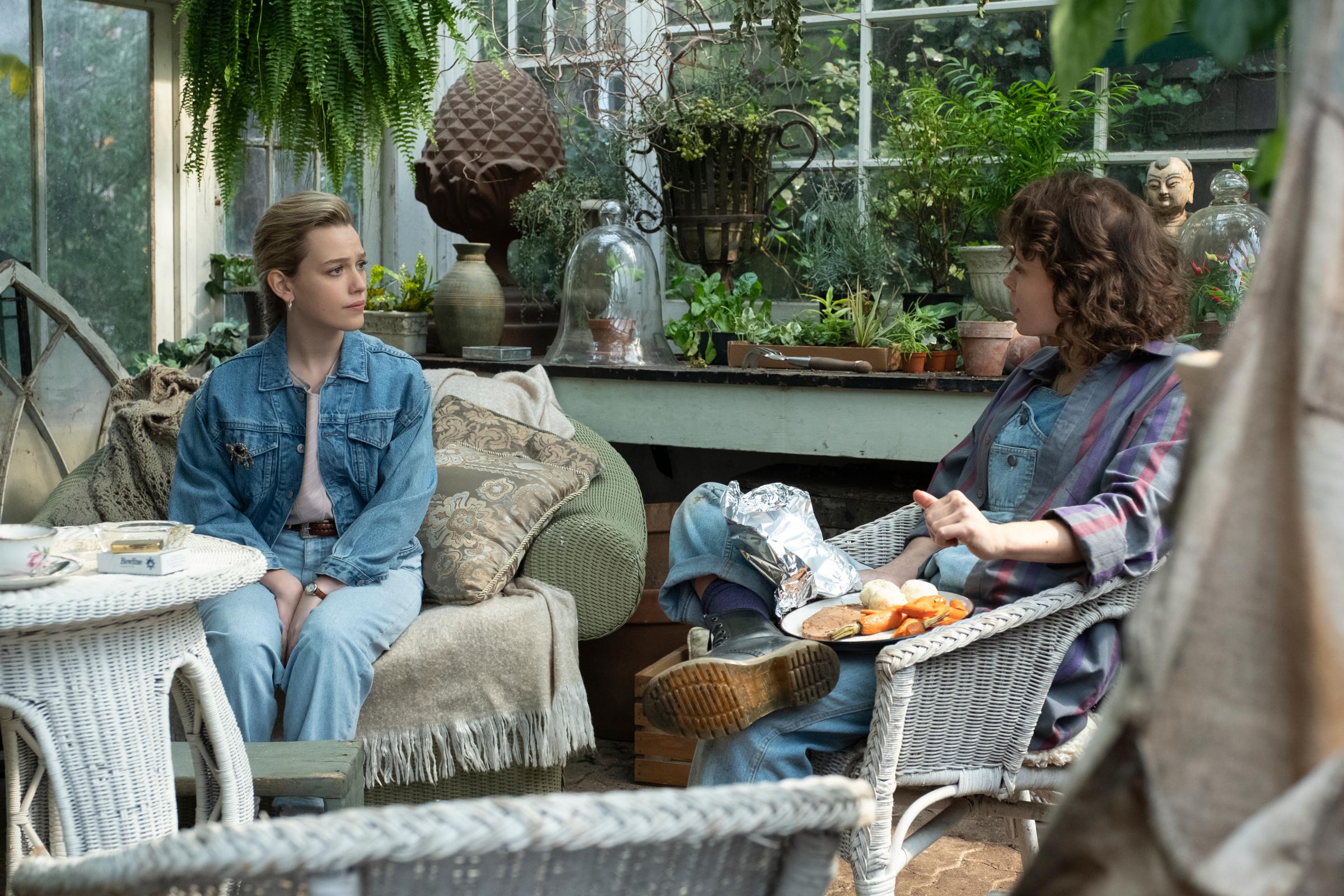Warning: This post contains spoilers for The Haunting of Bly Manor.
A nanny harboring a dark secret, orphaned siblings acting strangely, an eerie English estate—all the makings of a classic horror story. Throw in a few vengeful spirits, some romantic entanglements and a bittersweet twist ending and you’ve got The Haunting of Bly Manor, the new season of Netflix’s The Haunting anthology series.
Bly Manor follows in the footsteps of its 2018 predecessor, The Haunting of Hill House, by drawing on the work of a renowned author for its inspiration. But whereas The Haunting of Hill House is a modern reimagining of Shirley Jackson’s 1959 novel of the same name, Bly Manor pulls elements from a number of different Henry James stories into a 1980s setting.
The overarching narrative of Bly follows the general storyline of James’s 1898 novella The Turn of the Screw, in which a governess is plagued by visions of malevolent spirits after taking a post caring for two orphaned children at a remote English country house. But while Turn leaves readers to decide for themselves whether the apparitions were real or the governess was simply mad—a mystery that continues to inspire debate to this day—by the end of Bly, there’s no denying the ghostly presence of dearly departed au pair Miss Jessel (Tahirah Sharif), her lover Peter Quint (Oliver Jackson-Cohen) or even the manor’s least hospitable resident, the Lady of the Lake (Kate Siegel).
With series creator Mike Flanagan at Bly‘s helm, several familiar Hill House faces—including Victoria Pedretti, Jackson-Cohen and Siegel—appear in new roles. This time around, the former onscreen siblings are pitted against each other, with Pedretti taking on the role of Dani Clayton, a newly hired American nanny who discovers strange things afoot when she arrives at Bly to care for her two young wards (Amelie Bea Smith as Flora and Benjamin Evan Ainsworth as Miles).
And while Bly has plenty of “chills, thrills and things that go bump in the night,” in a departure from the source material, it’s more of a gothic love story than a gothic thriller. But that shouldn’t put horror fans off.
“Gothic romance is often misunderstood—something about the word ‘romance’ lends itself to expectations of something tawdry, syrupy. Sappy even,” Flanagan said in a statement. “But in Henry James’ world, ‘romance’ had a different connotation. Romance meant mystery and excitement—and Gothic romance meant horror and ruin. Romance held buried secrets, supernatural agony, and the sense of encroaching doom. Gothic romance, it turns out, has teeth.”
This is certainly not the first time that Turn has been adapted for the screen. As one of the most classic ghost stories of all time, the novella has inspired numerous properties over the years. Here’s what to know about previous adaptations, the other sources from which Bly draws inspiration, and where the new series diverges from its source material.
Previous Turn of the Screw adaptations

Nearly 60 years after it was first released, 1961’s The Innocents remains not only the most celebrated Turn adaptation, but also the most faithful to the original.
“Just as Hill House had been perfectly adapted by Robert Wise in 1963, so has The Turn of the Screw in Jack Clayton’s 1961 The Innocents,” Flanagan said in the statement. “As with last season, we saw little upside in trying to improve upon that adaptation. Our governess (whose name is an homage to Jack Clayton) will not follow in Deborah Kerr’s footsteps, not exactly…as with Hill House, we wanted to make something at once old and new; reimagined and reverent.”
But other Turn adaptations are worthy of attention too. While there have certainly been some misses—critics described 2020’s The Turning as “humorless—and scare-free” and “a fuzzy, frayed adaptation”—movies like 2001’s The Others, the 2015 Brazilian thriller Through the Shadow and 2016’s The Awakening—which all put their own haunting spin on the novella’s themes—are worthy viewing for horror fans.
As for Bly, thanks to its nine-episode format, the show has time to do something that other adaptations don’t: pay homage to a number of James’ other stories.
Other Henry James stories that inspired The Haunting of Bly Manor

While The Turn of the Screw provides the axis on which the season, well, turns, some of Bly‘s most chilling moments are pulled from other James stories.
Flanagan said the show’s creators reviewed all of James’ horror fiction to pay homage to the author whose influence is “woven into the DNA of modern genre like a pale, wide-eyed ghost peering out from behind the facade of contemporary horror.”
The title of every episode, from “The Great Good Place” to “The Altar of the Dead,” is also the title of one of James’ short stories. But it’s episodes six, “The Jolly Corner,” and eight, “The Romance of Certain Old Clothes,” that offer the most literal interpretations of their literary counterparts.
In James’ original tale, “The Jolly Corner” is the nickname by which main character Spencer Brydon refers to his family home in New York—a house that, after returning from 33 years abroad, he begins to suspect may be haunted by the ghost of the man he might’ve been had he stayed in America.
The show’s version has different specifics, but the same regret-inspired gist. In the episode, we learn that Henry Wingrave (Henry Thomas), Flora and Miles’ estranged uncle, has been haunted by visions of his own smirking doppelgänger ever since he learned of the deaths of his brother and his brother’s wife, with whom he was having an affair.

“The Romance of Certain Old Clothes,” on the other hand, provides the explanation of how Bly Manor came to be haunted in the first place. The black-and-white episode traces the origin of Bly’s ghost problem back to two sisters, Viola (Siegel) and Perdita (Katie Parker), who occupied the manor toward the middle of the 17th century.
To make a long story short, after Viola falls gravely ill, Perdita kills her, marries her widowed husband and decides to break into the chest of gowns and jewels that she had put away for her daughter. Unfortunately for Perdita, upon doing so, she discovers that Viola’s spirit has been lying in wait inside, and meets her own demise.
Although the sisters are reversed in the original, Bly‘s version is otherwise a pretty straightforward adaptation. But Flanagan puts his own unique spin on the tale by giving Viola’s ghost a major role to play in the events that follow the opening of the chest.
How a bittersweet twist departs from James’ story

After wreaking ghostly havoc on Bly for more than three centuries, Viola’s vengeful spirit finds her ultimate resting place inside Dani, who offers herself up as a vessel to save Flora from an untimely death.
What follows is the true “love story” portion of the season, as Dani and former Bly gardener Jamie (Amelia Eve) spend the years they have left before Viola’s presence overtakes Dani living together in America. They can’t technically get married (as same-sex marriage was still illegal in the U.S. during the time in which the show is set), but they exchange rings as a symbol of their commitment to one another.
Unfortunately, it’s not long after this that Dani realizes Viola’s influence is growing too strong and she’s forced to leave Jamie—so as not to put her in danger—and return to the lake at Bly. Here’s where the bittersweet part of the twist comes in.
While, unlike in The Turn of the Screw, both Flora and Miles survive their years at Bly and, in time, forget the whole ordeal, Dani’s sacrifice costs her and Jamie greatly. In the season’s final minutes, we learn that the woman recounting the story of Bly to the guests of a wedding—Flora’s wedding, as it happens—is an older Jamie (Carla Gugino). And she’s spent all the long days since Dani’s disappearance longing for her return.
The finale ultimately ends on a hopeful note, but it’s not without its thorns.
More Must-Reads from TIME
- Donald Trump Is TIME's 2024 Person of the Year
- Why We Chose Trump as Person of the Year
- Is Intermittent Fasting Good or Bad for You?
- The 100 Must-Read Books of 2024
- The 20 Best Christmas TV Episodes
- Column: If Optimism Feels Ridiculous Now, Try Hope
- The Future of Climate Action Is Trade Policy
- Merle Bombardieri Is Helping People Make the Baby Decision
Write to Megan McCluskey at megan.mccluskey@time.com